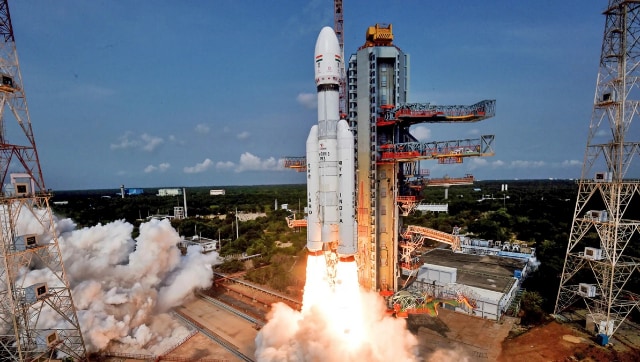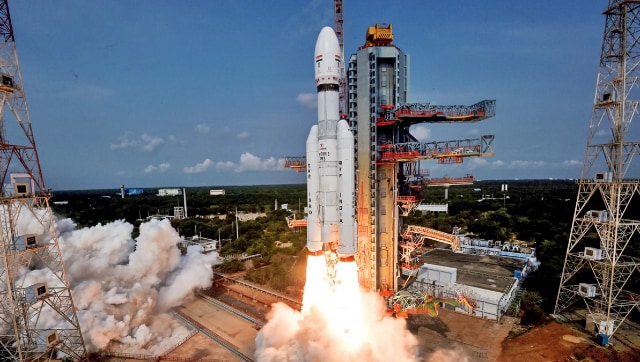Chandrayaan 3: How ISRO, NASA & ESA have come together to ensure Indian Lunar Mission’s success

While the engineers and scientists at ISRO were solely responsible for the successful launch of the Chandrayaan 3 lunar mission, they will be supported by NASA and ESA (European Space Agency) in ensuring that overall mission is successful
In a glorious moment for billions of people across India, ISRO successfully launched its third mission to the Moon, the Chandrayaan 3, from the hallowed grounds of Sriharhikota.
While the scientists and engineers at ISRO (Indian Space Research Organisation) were solely responsible for the magnificent launch, the people at NASA and the ESA (European Space Agency) will be just as responsible for ensuring India’s lunar mission reaches its destination safely, and on time. The three of them coming together is also a great example of India’s soft power, as well as the Indian Space Programme’s repute.
ISRO, ESA and NASA working together
Chandrayaan 3, for those unaware, is a lunar expedition comprising of a lander and a rover. The primary objective of this endeavour is to conduct scientific studies on the lunar surface for a duration of 14 days.
Related Articles

ISRO to launch Chandrayaan 3 between July 13 and 19

India’s Moon Mission: Chandrayaan-3 to lift off on July 14 from Sriharikota
To ensure seamless communication, ISRO will use its own deep-space communication antenna but will need assistance from ground stations across the world. The coordination of these ground stations will be facilitated by the ESA and US’ NASA (National Aeronautics and Space Administration).
For any space-based mission, the ability to communicate with the Earth is the most crucial aspect.
In such a scenario, ground stations on Earth play a crucial role in maintaining communication and connection with spacecraft as they venture into the uncertainties and hazards of space. These stations are vital for gathering data from the spacecraft, monitoring its status, ensuring its safety, and determining its location.
The need to collaborate
ISRO operates a 32-metre deep space tracking station in the country, which enables them to track, command, and receive telemetry and scientific data from their distant spacecraft. However, there are instances when ISRO’s operators need to communicate with a spacecraft that is beyond the range of this antenna. During the Chandrayaan’s flight to the Moon, there will be many such instances, where ISRO won’t be able to establish a direct line of communication.
Constructing new large-scale antennas and control stations worldwide can be very expensive. To mitigate these costs and promote international collaboration in space exploration, ISRO, like many other space agencies and commercial entities globally, seeks support from partner organizations’ ground stations.
By leveraging the facilities of these partner stations, ISRO can effectively track, command, and receive data from its spacecraft. This approach not only reduces expenses but also fosters cooperation and collaboration in the field of spaceflight on an international scale.
How exactly are ESA and NASA helping ISRO.
Through its global ‘Estrack’ network of deep space stations, ESA will provide assistance to ISRO in tracking, commanding, and receiving data from Chandrayaan 3, throughout its journey and even on the Moon. ESA’s ESOC mission control centre in Darmstadt, Germany will serve as the central hub for this network.
For the Chandrayaan 3 mission, ESA will also utilize its 15-meter antenna located in Kourou, French Guiana, to track the spacecraft in the initial days after launch. This tracking will help confirm the spacecraft’s successful launch and its overall health.
As the spacecraft moves away from Earth, ESA will coordinate tracking support from Goonhilly Earth Station Ltd’s 32-meter antenna in the United Kingdom. Goonhilly will provide tracking assistance for Chandrayaan 3’s propulsion and lander modules, playing a crucial role during the lunar surface operations phase to ensure the safe transmission of scientific data acquired by the rover back to ISRO.
The data and telemetry transmitted by Chandrayaan 3, received via Kourou and Goonhilly, will be first forwarded to ESOC before being sent to ISRO for analysis. This collaborative effort between ESA’s European stations, NASA’s Deep Space Network, and ISRO’s own stations will ensure continuous monitoring and support for the spacecraft’s operators, allowing them to maintain constant contact and oversight of our pioneering Moon mission.
For all the latest Technology News Click Here

